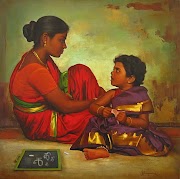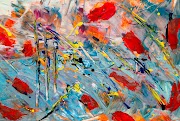 |
| Image credit: Pixels |
What's fine art and Why is it called fine arts?
The term "fine arts" has been used for centuries to describe a select group of artistic disciplines that are highly regarded for their aesthetic value and cultural significance. But have you ever wondered why these particular art forms are referred to as "fine arts"?
Well! The term "fine arts" traces its roots back to ancient Greece and Rome, where the arts were classified into two main categories: the "mechanical arts" and the "liberal arts." The mechanical arts encompassed practical skills and crafts, such as blacksmithing, carpentry, and pottery, while the liberal arts were intellectual pursuits associated with higher education, including grammar, rhetoric, logic, and mathematics. The liberal arts were considered noble and essential for a well-rounded education, cultivating the intellectual faculties of individuals.
Over time, the concept of the "fine arts" emerged as a refinement of the liberal arts. During the Renaissance period in Europe, a renewed interest in the arts and a focus on humanism led to a reevaluation of artistic expression. The fine arts came to encompass those disciplines that were perceived as embodying the highest level of creativity, skill, and cultural significance.
The term "fine" in "fine arts" denotes the quality, skill, and refinement that artists strive to achieve in their works. It signifies the pursuit of excellence and the ability to evoke emotions, convey ideas, and inspire contemplation. The fine arts require technical mastery, aesthetic sensibility, and creative vision, distinguishing them from more utilitarian or functional forms of artistic expression.
The categorization of art forms as "fine arts" has evolved over time and may vary in different cultural contexts. While painting, sculpture, architecture, literature, music, dance, and theatre are commonly recognized as the seven fine arts, there is ongoing debate and discourse surrounding the inclusion or exclusion of certain disciplines. New art forms and mediums continue to emerge, challenging traditional definitions and expanding the boundaries of artistic expression.
The designation of art forms as "fine arts" also carries with it an implied cultural and societal value. It suggests that these art forms are deserving of special attention, preservation, and patronage. The designation elevates the status of these disciplines, positioning them as an essential part of our shared cultural heritage.
Thus we can say that the term "fine arts" originated from ancient classifications of arts and evolved to encompass those artistic disciplines that exemplify creativity, skill, and cultural significance.
What are the characteristics of Fine Art?
Fine art is a realm of artistic expression that encompasses a wide range of mediums, styles, and techniques. It is a diverse and dynamic domain that allows artists to communicate their thoughts, emotions, and ideas in a deeply personal and meaningful way. Let’s explore the characteristics that define and distinguish fine art from other forms of creative expression.
1. Creativity and Imagination:
Fine art is a manifestation of the artist's creative spirit and imagination. It encourages originality, innovation, and the exploration of unconventional ideas. Artists employ their unique perspectives and visions to create artworks that challenge norms, provoke thought, and inspire awe.
2. Aesthetic Beauty:
Fine art often seeks to evoke a sense of aesthetic beauty. Whether it is through harmonious compositions, captivating colors, or skilled craftsmanship, fine art has the power to captivate the viewer's senses and create a visual experience that is pleasing and thought-provoking.
3. Skill and Technique:
Fine art requires a mastery of skills and techniques specific to each artistic medium. Artists invest years in honing their craft, developing their abilities to manipulate materials, and create visually striking and technically proficient artworks. The level of skill and technique displayed in fine art is often a testament to the artist's dedication and expertise.
4. Emotional and Conceptual Depth:
Fine art has the ability to evoke a wide range of emotions and convey complex concepts. Artists use their chosen mediums to express their innermost thoughts, feelings, and experiences, inviting viewers to engage with the artwork on an emotional and intellectual level. Fine art can provoke introspection, challenge preconceived notions, and initiate meaningful dialogue.
5. Personal Expression:
Fine art is deeply personal, reflecting the artist's unique perspective and individual voice. Artists infuse their artworks with their personal experiences, beliefs, and values, creating pieces that are imbued with a sense of authenticity and personal connection.
6. Interpretation and Subjectivity:
Fine art allows for subjective interpretation and invites viewers to bring their own experiences and perspectives to the artwork. Each person may perceive and connect with a piece of fine art in a different way, creating a rich and diverse range of responses and meanings.
7. Historical and Cultural Context:
Fine art is often influenced by the historical and cultural context in which it is created. Artists draw inspiration from their surroundings, societal influences, and artistic traditions, incorporating elements that reflect the zeitgeist of their time. Understanding the historical and cultural context can enhance the appreciation and interpretation of fine art.
What are the branches of fine arts or What are the 7 fine arts?
The world of art is vast and encompasses a wide range of creative expressions. Within this realm, the concept of the fine arts holds a special place. Fine arts are considered to be forms of art that are appreciated for their aesthetic value and are traditionally regarded as having a higher level of cultural significance. let’s delve into the seven recognized fine arts also called the branches of fine arts, each with its unique characteristics and contributions to the artistic landscape.
1. Painting
Painting is one of the oldest and most prominent forms of fine art. It involves applying pigments to a surface, typically canvas or paper, using various techniques and mediums such as oil, acrylic, watercolor, or pastels. Paintings allow artists to express their creativity and vision through color, composition, and brushwork. They can range from realistic portrayals to abstract representations, offering a wide spectrum of artistic styles and interpretations.
2. Sculpture
Sculpture is the art of creating three-dimensional forms using materials such as stone, wood, metal, clay, or even found objects. Sculptors utilize techniques like carving, modeling, and assembling to bring their ideas to life. Sculptures can be static or interactive, inviting viewers to engage with them physically and emotionally. This form of art explores space, texture, and form, capturing the essence of the artist's imagination in tangible and enduring structures.
3. Architecture
Architecture is defined as the art as well as the science of designing and constructing buildings and structures. It combines aesthetics, functionality, and cultural considerations to create spaces that serve human needs and aspirations. Architects employ design principles, structural engineering, and material selection to shape our built environment. From iconic landmarks to everyday dwellings, architecture shapes our experiences, influences our behavior, and reflects the cultural identity of societies.
4. Literature
Literature is the art of written works, including novels, poetry, plays, essays, and more. It uses language to convey ideas, emotions, and narratives, allowing authors to paint vivid pictures with words. Literature explores themes, characters, and human experiences, transporting readers to different worlds and challenging their perspectives. It engages the imagination, stirs emotions, and provokes thought, making it an essential form of artistic expression.
5. Music
Music is an art form that encompasses sound, rhythm, melody, and harmony. It transcends cultural boundaries and speaks directly to our emotions. Musicians create compositions, performances, and improvisations using instruments, voices, or electronic means. Music evokes moods, tells stories, and connects people across generations. It is a powerful form of artistic expression that brings joy, inspiration, and solace to our lives.
6. Dance
Dance is a form of art that involves rhythmic body movements and expressions. Dancers use their bodies to communicate ideas, emotions, and stories. Dance is characterized by fluidity, grace, and precision. It can be rooted in cultural traditions or explore contemporary styles. Through movement, dancers captivate audiences and convey narratives that words alone cannot express. Dance celebrates the beauty of the human body and the power of physical expression.
7. Theatre
Theatre combines various art forms, including acting, stage design, music, and writing, to create live performances. It brings stories to life through the interaction of actors, sets, costumes, lighting, and sound. Theatre engages audiences in a shared experience, provoking emotions, and fostering empathy. It explores the human condition, challenges societal norms, and provides a platform for social commentary and self-reflection.
Why is fine art important
fine art holds immense importance in our lives and society. It is a testament to the human spirit's boundless creativity and a catalyst for personal growth, cultural understanding, and social change. Whether it is through the act of creation, appreciation, or education, fine art enhances our lives, stimulates our minds, and nurtures our souls. It reminds us of our shared humanity and the beauty that can be found in the diverse tapestry of artistic expression.
Conclusion
The fine arts—painting, sculpture, architecture, literature, music, dance, and theatre—represent a rich tapestry of human creativity and expression. Each art form offers a unique lens through which artists explore the world and communicate their ideas, emotions, and perspectives. Whether through visual or performing arts, these forms enrich our lives, provoke thought, and provide avenues for cultural exchange and understanding. By appreciating and engaging with the fine arts, we embrace the diverse range of human experiences and celebrate the transformative power of artistic expression.














.jpg)



.jpg)




0 Comments